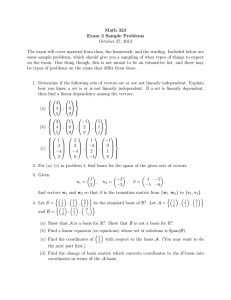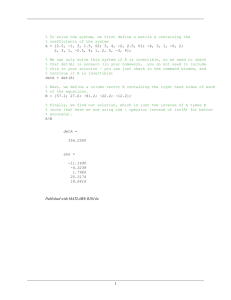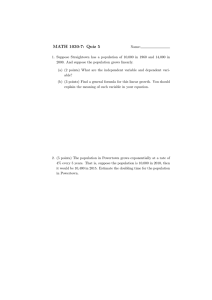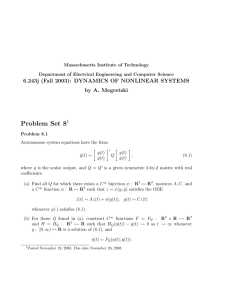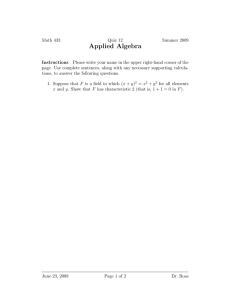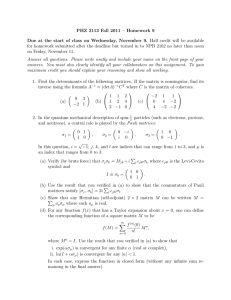Linear Algebra Exam Prep: Eigenvalues, Bases, Transformations
advertisement
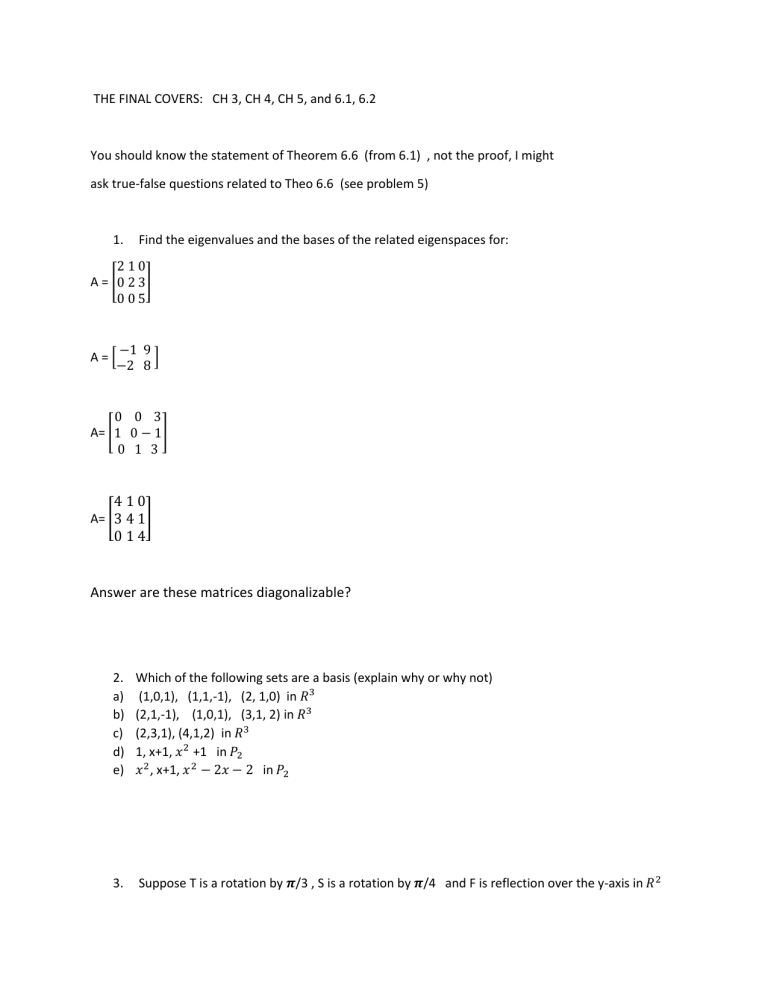
THE FINAL COVERS: CH 3, CH 4, CH 5, and 6.1, 6.2 You should know the statement of Theorem 6.6 (from 6.1) , not the proof, I might ask true-false questions related to Theo 6.6 (see problem 5) 1. Find the eigenvalues and the bases of the related eigenspaces for: 210 A = [ 0 2 3] 005 A=[ −1 9 ] −2 8 0 0 3 A= [1 0 − 1] 0 1 3 410 A= [3 4 1] 014 Answer are these matrices diagonalizable? 2. a) b) c) d) e) Which of the following sets are a basis (explain why or why not) (1,0,1), (1,1,-1), (2, 1,0) in 𝑅 3 (2,1,-1), (1,0,1), (3,1, 2) in 𝑅 3 (2,3,1), (4,1,2) in 𝑅 3 1, x+1, 𝑥 2 +1 in 𝑃2 𝑥 2 , x+1, 𝑥 2 − 2𝑥 − 2 in 𝑃2 3. Suppose T is a rotation by 𝝅/3 , S is a rotation by 𝝅/4 and F is reflection over the y-axis in 𝑅 2 a) Write matrices for T, S, F with respect to standard basis in 𝑅 2 b) Find the matrices for compositions T ⃙ S, S ⃙ T, compositions T ⃙ F, F ⃙ T c) Which of these compositions are commutative? 4. For the following matrices find the bases for: nullspace, rowspace, columnspace Rank and nullity: 1 2 01 A = [−1 0 1 1] 1 4 13 1 2 0 1 1 0 1 1 A=[ ] 0 2 −1 1 2 4 0 3 : 5. Suppose A is a nxn matrix. True or false: a) b) c) d) e) f) If detA ≠0, then Ax=b has a unique solution for every real b If detA ≠0, then the rows of A are linearly independent If A is invertible then det A=0 The rows of A are linearly independent if the columns of A are linearly independent If A has nullity 0, then detA ≠0 If A has nullity > 0, then detA ≠0 6. Suppose W is the span of the vectors (1,2,0,1), (-1,0,1,1), (1,4,1,3). Find the basis of 𝑊 ⊥ . (hint: use A from problem 4.) 7. Apply the Gram Schmidt process to the vectors (-1,2,1), (0,-1,1), (3,3,1). 8. Suppose that V is an inner product space, u,v in V. Show: a) II 𝑢 + 𝑣 II 2 + II 𝑢 − 𝑣 II 2 = 2( II 𝑢 II 2 + II 𝑣 II 2 ) b) If u,v are orthonormal then II 𝑢 + 𝑣 II 2 = II 𝑢 − 𝑣 II 2 = 2
